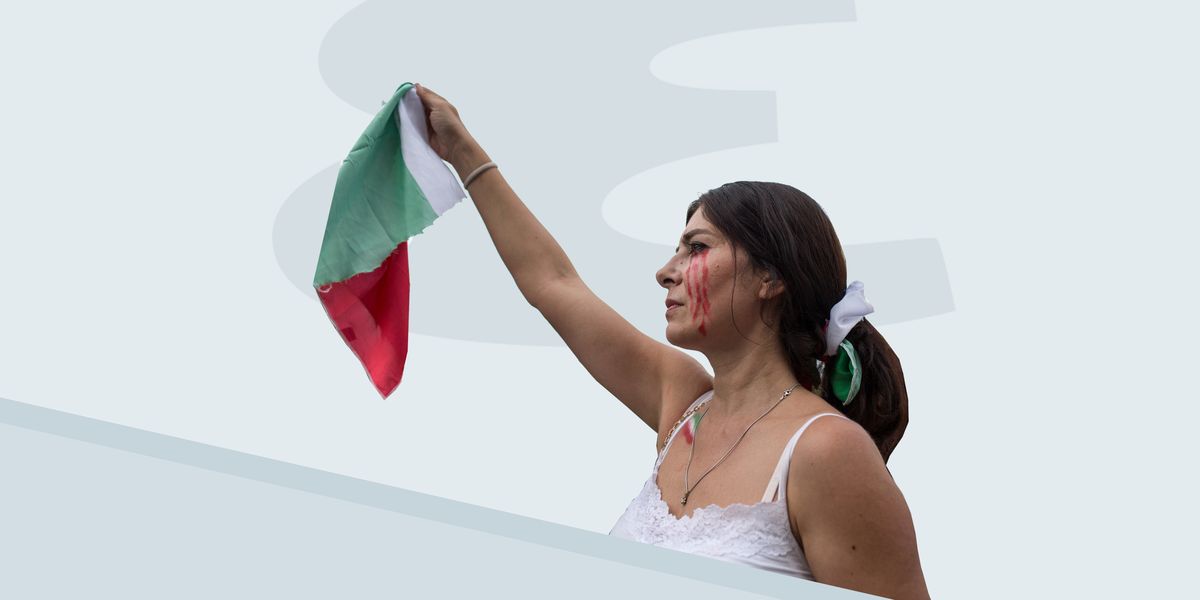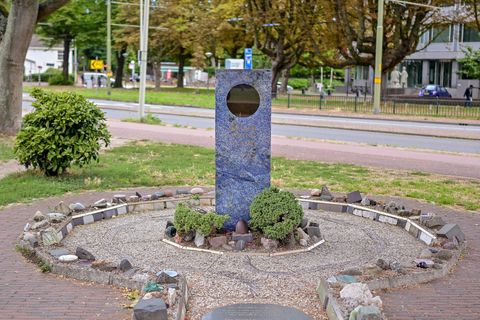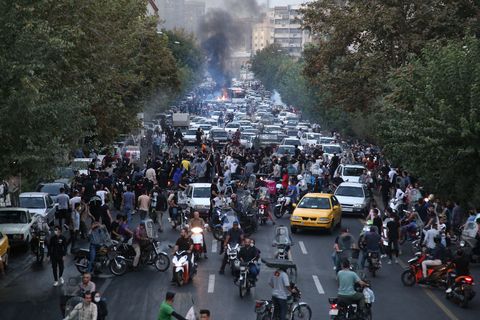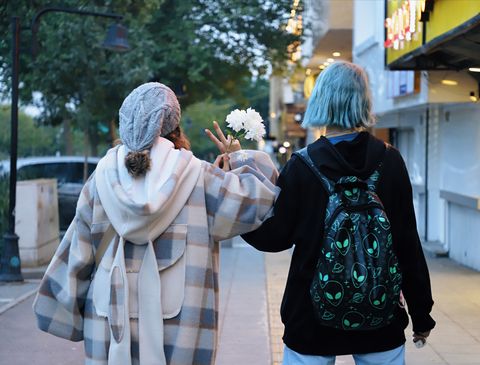
A Girl’s-Eye View of What’s Happening in Iran
Iran never seemed to get much consideration from Americans of my generation. It was more of a Boomer thing. Our parents watched the events of the 1970s and 1980s—the Revolution, the hostage crisis, the spiral into repressive theocracy—and so for them, Iran has loomed as a very real, potentially hostile presence. But for millennials who missed all of that, Iran was old news; instead, the Taliban and ISIS were our generational Islamabaddies. Iran’s Supreme Leader would pop up in the news now and again—arrested journalists here, yellow cake there, the will-they-won’t-they of the nuclear deal—but we didn’t pay much attention to anything that resembled a war MacGuffin, having seen the fallout from the Great Aluminum Tube Scare of 2002. We had a bad case of Middle East burnout, in other words.
But if you’ve seen the news, you know that there’s something happening in Iran. What it is isn’t exactly clear—not yet, at least. But it very well could become one of the great advancements in human rights of our time. The world should pay attention—perhaps particularly Americans, who presently find themselves faced with wide-ranging attempts to wrest away hard-won liberties at the hands of a religious zealotry. It’s important to understand what happens when your country falls into the grip of a theocracy.
This story begins and ends with a young woman’s hair, but that’s not what it’s about. Presently, women’s hair, normally an aesthetic concern, is symbolic of something much more. Something revolutionary.
In September, my soon-to-be-niece, Azadeh, flew from Tehran to Istanbul, where she joined my partner Najwa and I to spend her two-week vacation from school. We met her at the airport, and during the taxi ride home, she alternated between excited chatter and shy silence. Though she is close to my partner, it was my first time meeting her, or indeed anyone from Najwa’s family. (Names have been changed out of consideration for safety.)
It was Azadeh’s first trip of this kind: her first solo flight, her first time traveling without her mother and grandmother—my fiancée’s ardently religious maman (my eventual maman-in-law)—and one of the few times in her life when she could go out into the streets without wearing hijab.
I asked what she would like to do while in Istanbul. She smiled somewhat uncertainly and spoke to Najwa in rapid Farsi, which was her tendency until she got to know me better, even though her English is quite good. All I caught was the word Starbucks.
Najwa laughed. “She wants to go to Starbucks.”
Azadeh bristled a bit at the laugh, thinking that maybe she was being teased, then said in English, “It is probably normal for you, but we do not have it in Iran.”
That morning before things kicked off, I stood off to the edge and watched as these provocative Persians became reacquainted, for most of them seemed to know each other. Many went way back, having worked in some degree of concordance ever since leaving their home country in the years and decades following the 1979 Iranian Revolution. Most could not return without fearing prison or worse, because they advocated opinions not shared by the Islamic Republic, and because they outright opposed it. Some appeared to be in their thirties and looked like activists, but many were older and looked like university professors. Many, if not most, are.
After watching a Q&A between Najwa’s mentor Dr. Nayereh Tohidi and a professor named Asef Bayat, who spoke about his concept of non-movement (an idea that encapsulates the ways ordinary people can drive revolutionary change through their everyday actions), I sat in on a talk entitled “Scholars and Artists at Risk,” where lawyer Andra Matei spoke on the need for an international framework for the legal defense of artistic freedom of expression.
Matei—who had the assiduous attitude of a person busied and burdened by a great many responsibilities—operates an organization called Avant-Garde Lawyers that provides legal counsel to artists under attack all over the world. She would later tell me about a case she’s working on that involves a poet the Egyptian government has imprisoned for crimes associated with a song and book of poetry he’d written. According to the freedom of expression advocate organization PEN, these crimes include “blasphemy,” “insulting the military,” and “contempt of religion.” The director of the song’s music video had already died in prison; now, the poet’s release was uncertain.
We discussed the case more before our talk turned to attacks on the freedom of expression in general. It is, we agreed, a global issue. Just two weeks earlier, author Salman Rushdie had been brutally stabbed in western New York more than three decades after Ayatollah Khomeini, the predecessor to Iran’s current Supreme Leader, issued a fatwa accusing the writer of blasphemy and calling for his death. Later that very day, the Turkish singer Gülşen would be arrested for making a joke about the country’s religious schools during a performance.
“Americans like to imagine that it’s only a problem in far-off places like the Middle East,” I noted, “but all across the United States, religious conservatives are banning books that contain anything they don’t agree with. It’s not a long stretch of the mind to see how that could someday evolve into arrests for blasphemy.”
“And at the same time,” Matei exclaimed, “you have liberal college students who demand safe spaces where they don’t have to hear anything they don’t agree with.” Blasphemy of another form.
If blasphemy is a matter of perspective, who gets to define and dole out punishments for it? Humanity is not homogenous. We have nonuniform notions, and history has repeatedly proven that the expectation of adherence to a single conception is destined to be met with dissonance. To deem such difference and dissension intolerable—illegal, even—has well-known, tragic outcomes, from Auschwitz to the Killing Fields, COINTELPRO to the Revolutionary Guard, and so on.
I told Matei that I would poke around and try to find a home for this story. That the Egyptian government is vanishing songwriters into prison struck me as deserving more coverage than it’s gotten.
Dinner that evening was a chaotic affair where beer and wine were poured steadily between various toasts and speeches. There were about eighty of us crammed into a restaurant, and Persian was the dominant tongue.
Seated across from me was activist and writer Mansoureh Shojaee, who went into exile after her efforts to advance women’s rights, including the Iranian Women’s Movement Museum, landed her in the country’s infamous Evin Prison in 2009. A frenetic woman of 64, Shojaee constantly seemed to be holding six conversations at once with the other members of the diaspora seated at our table. These included Nayereh Tohidi and her husband Kazem Alamdari; Dutch Senator Farah Karimi, who had fled Iran in the early 1980s; University of Sussex scholar Kamran Matin; and Bayat, among many others. It was a table at which you could practically taste the smart-stew simmering, even through the scourge of jetlag. Said jetlag was subdued (or perhaps accentuated) by an unfaltering flow of booze and tea.
The next morning, I took my hangover to check out the Peace Palace and the International Court of Justice. While there, I tried to take a photo of the World Peace Flame, but it was very small and difficult to capture. Barely a flicker.
A few weeks later, I was in Istanbul, and Azadeh walked into the room where I was working with a troubled, almost frightened expression on her face. I gave her only a fraction of my attention, focused as I was on trying to wrangle a publisher for the Egypt story. There was frustratingly little interest.
In any case, I diverted a sliver of my bandwidth to my niece-to-be and asked if something was wrong.
“A girl has been killed,” she informed me, her voice solemn. “In Tehran. By the Morality Police. They arrested her and beat her for not wearing hijab properly. And she died.”
In retrospect, my response was poor. Dismissive, almost. I believe I shook my head and said it was sad, but that was all. I was busy and perhaps resented the distraction a little. To me, it sounded like more bad news from a place where bad news, particularly bad news for women, came as no surprise. Azadeh knew better, however—she seemed to intuit that something new was happening or was about to happen, and she persisted.
“Her name was Mahsa Amini,” she continued. “She was not even from Tehran. She was from the Kurdistan of Iran. She was just visiting with her brother, but they killed her anyway.”
She pursed her lips and shrugged her tiny teenage frame as if to say, That is that. That is the way things are. But I could see that she was deeply troubled by what had happened to this woman. I, however, changed the subject and asked if she would like to go to the iconic Galata neighborhood at some point and take some photos, for she is an aspiring photographer. She agreed and I turned back to the screen.
It only took a few hours following Mahsa Amini’s death for protests to spark in Tehran before exploding across the country over the next few days. What appeared to begin as a few scattered, angry gatherings soon erupted into street battles against riot police and elements of the Revolutionary Guard. At first, the primary weapons seemed to be rocks versus batons, but it wasn’t long before Molotov cocktails and gunfire were popping up in videos emerging from all over the country.
Now I was paying attention. In Istanbul, we were watching events unfold minute by minute. Not via the news—traditional media outlets were late by days and even weeks—but by following relevant hashtags like #MahsaAmini, #IranProtests2022, and #IranRevolution2022. Social media was increasingly entering the fray, which is important considering how much the Islamic Republic’s strategy leverages propaganda and misinformation. Even Anonymous claimed to have joined the fight, with the hacker collective and affiliated groups saying they had disrupted Iranian government systems, cameras, and the website of the central bank.
As the days passed, it became apparent that this was different from previous protests—these appeared angrier, more widespread, and more sustained. Azadeh, Najwa, and I watched videos leaking out of the country via social media late into the night, stunned by what seemed to be something heretofore unseen. Videos of women dancing and burning their hijabs in the street. Of crowds of protesters hurling barrages of rocks at police. Of crowds chanting death to the dictator and tearing down images of the Supreme Leader. Videos of the police and militias beating women with batons. Of police carefully taking aim and methodically shooting at protesters. Of a young girl apparently shot, her limp body in the arms of a desperate fleeing man. Of a mother wailing over her child’s body. Of blindfolded prisoners herded into jails en masse.
And then the government started shutting down huge swathes of the internet. This is a common tactic among authoritarians attempting not only to disrupt protests, but also hide what’s going on from the world.
News from Iran slowed to a trickle. Many on the outside agonized over its absence.
We decided to keep our niece with us for another couple of weeks to see how things would shake out. One day while Najwa was working, Azadeh and I rode the bus across the city to the bustling tourist district of Galata, where we planned to visit an art gallery and photograph the neighborhood.
On the bus, Azadeh showed me videos posted to social media by pop stars declaring their support for the people of Iran. She asked me if I thought it would help, and I told her I didn’t know—that it couldn’t hurt. That it meant the world was paying attention.
Our conversation turned, as it so often had over the preceding days, to our most optimistic of topics: what things would be like after the regime fell (the ultimate goal of the protests). No more compulsory hijab! Political prisoners freed! Dance clubs! And—eventually—the normalization of relations between Iran and the rest of the world. Greater passport strength for the Iranians, meaning more freedom of movement and expanded access to opportunities. Perhaps it would become easier for Azadeh to study abroad, a proposition that currently lands somewhere between difficult and impossible.
Then there was how it could impact the Middle East in general. The Islamic Republic fuels much of the region’s conflict, from drawing the ire and involvement of the United States, to consistently ratcheting up hostility with neighbors like Saudi Arabia and Israel, to fueling terrorist organizations scattered across several countries. A new secular democratic government could dramatically ease tension across the board. The people’s ousting of a hardline Islamist government could also inspire similar efforts in nations like Iraq and Afghanistan. On a wider scope, a less isolated and antagonistic government could ease some of the proxy brinkmanship between the US and Russia.
It’s a big deal, in other words, with potentially transformative implications.
“It’s so sad that Mahsa Amini had to die before people got angry enough to do something,” Azadeh mused, more thoughtful than gloomy. She paused and considered. “Maybe the only way change happens is if somebody dies.”
Everyone near us on the crowded bus looked at her. Our apartment was in a part of the city where English speakers are few, but they all understood that.
At the art gallery, everything reminded her of Iran. A series of plaster casts of women’s heads hanging by their hair, mouths bloodied. Ceramic figurines of elaborately dressed women, their guts hanging out. A display of women’s portraits, the ink dripping and obscuring their features. After that we made our way down the steep alleys that snake beneath Galata Tower, and as we went along, Azadeh snapped photos of strange-looking doors, random people, and cats.
Eventually we were tired from all the heat and from walking up and down the hill, so we stopped to cool off at… Starbucks, of course. Yes, Turkey is famed for its coffee, but sometimes being an uncle requires sacrifice.
The place was packed with college students, which inspired us to discuss something other than the events in Iran—a welcome break from what was becoming an increasingly fraught subject. Azadeh would be graduating soon and was considering where she would like to attend university. Istanbul topped the list for a number of reasons, not the least of which involved the fact that it wasn’t in Iran, was relatively welcoming to Iranians, and Azadeh already had a working grasp of the language. Above all, it would offer educational and artistic opportunities and freedoms that simply aren’t an option for students in Iran.
She wanted to study graphic design, but worried that her education in Iran had not properly prepared her for a university-level program. With a scornful expression, she explained that they spent too much time studying what she called “Islamic Republic bullshit.”
“Look at that girl,” she said. I’d noticed that she had been watching one of the university students, a young woman with long brown hair who was sitting alone before her laptop and typing intently. She looked to me like a typical college kid that you would encounter anywhere in the world. Azadeh sighed. “She’s so cool. What I want is to be like her, just working on my computer at Starbucks.”
I got the sense—not for the first time and not the last—that Azadeh and the Iranians are suspended in time, waiting for its gears to re-engage and start turning so they can once again move forward. It is a country and a people imprisoned—both metaphorically and in some cases (far too many cases) literally—by an ideology of control. Girls like Azadeh wait for deceptively simple things, like the ability to wear their hair out or enroll in school free of constructed sociopolitical barriers. For those living in exile, time seems to have stopped in 1979. They’ve spent decades in anticipation, fixated on the question of their country, waiting for the day when change will come and they are free to consider new quandaries. Waiting for the day when they can return home without fear of reprisal, without fearing for their very lives or those of their families. Waiting to move on.
If you want to read more please click here:
Credit to: www.esquire.com/news
#Iran
#NEWS



